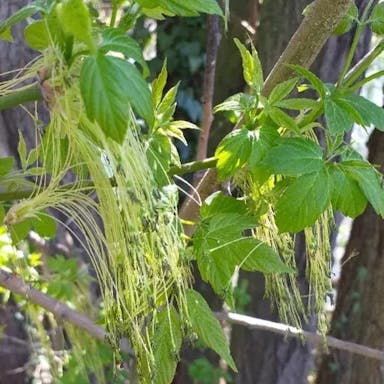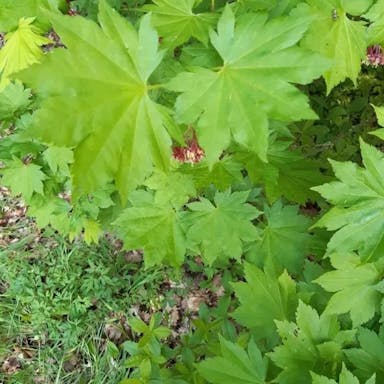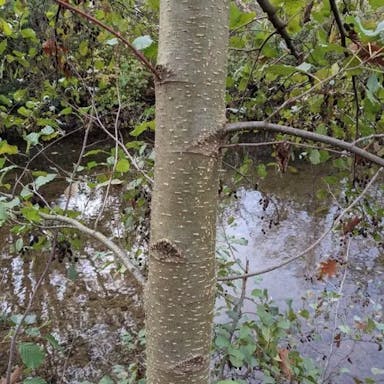Calabur-tree thrives best when potted rather than planted in-ground due to its sensitivity to soil conditions. To pot Calabur-tree, choose a container with good drainage, fill it with well-draining soil, and plant the tree at the same depth as it was in its previous container. Water the tree thoroughly after planting, and place it in a location with bright, indirect sunlight. When repotting, choose a slightly larger pot, gently remove the tree from its current container, and place it in the new pot with fresh soil. Mist the leaves occasionally to maintain humidity, and fertilize the tree during the growing season. If the tree shows signs of distress, such as yellowing leaves or stunted growth, consider adjusting its watering or lighting conditions.
Calabur-tree
- Common name
- Jamaican Cherry,Panama Berry
- Scientific name
- Muntingia calabura
Basic Information
- Muntingiaceae Family Muntingia Genus Calabur-tree Species
- Muntingiaceae > Muntingia > Muntingia calabura
- 83%
- The Completeness of This Encyclopedia
Please help us complete the encyclopedia, Terrarium is a encyclopedia service to be completed with everyone in the world. Currently, this page is 83% complete. For more information on how to contribute, please click here.
- Broad-leaved tree
- Small tree
- Tree
- Height
- 700cm ~ 1000cm
- Flower Color
- Leaf Color
- Anthesis
- spring, summer
- Sunlight Exposure
Full Sun Long hours of sunlight from morning to afternoon Partial Shade A location in the shade of a tree or where either the morning or afternoon is shaded Full Shade A place where there is no direct sunlight
- Full Sun
- Hardiness Zones
This is an indicator to know to which zone each plant can winter. Knowing the zone of each plant gives you an idea of the cold temperature resistance when grown in the ground without a roof. 2: -42.7 to -40.0 3: -39.9 to -34.4 4: -34.3 to -28.9 5: -28.8 to -23.3 6: -23.2 to -17.8 7: -17.7 to -12.2 8: -12.1 to -6.7 9: -6.6 to -1.1 10: -1.0 to 4.4 11: 4.5 to 10.0
- 10-12
- Cold resistance
- Poor
- Heat resistance
- Excellent
- Habitat of origin
- Mexico, Central and South America
- Growth Rate
- Fast
What is Calabur-tree (Muntingia calabura)?
What is Calabur-tree (Muntingia calabura)
Flower meaning
Calabur-tree can be propagated through seeds, cuttings, and air layering. Seeds should be sown in well-draining soil, kept moist, and placed in a warm, sunny location. Cuttings should be taken from healthy stems, treated with rooting hormone, and planted in a soilless mix. Air layering involves girdling a branch, applying rooting hormone, wrapping with moist sphagnum moss, and covering with plastic to encourage root growth. To maximize propagation success, it is recommended to use a combination of methods. Harvest seeds when mature, take cuttings in the spring, and perform air layering in the summer for best results.
Calendar of Calabur-tree (Muntingia calabura)
Calendar
Calabur-tree thrives in well-drained soil with a pH level between 6.0 and 7.5. It prefers loamy soil rich in organic matter for optimal growth. Fertilize Calabur-tree with a balanced fertilizer, such as a 10-10-10 NPK formula, in early spring before new growth appears. Apply fertilizer again in late spring and early summer to support flowering and fruiting. Avoid over-fertilization as it can lead to nutrient imbalances and potential harm to the plant. Monitor the plant's growth and adjust fertilizer application accordingly. Regularly check the soil quality to ensure it remains suitable for Calabur-tree's needs. Amend the soil with compost or organic matter if necessary to maintain its fertility.
How to grow Calabur-tree (Muntingia calabura)
Watering
Calabur-tree is susceptible to various pests and diseases, including aphids, scale insects, and powdery mildew. These pests can weaken the plant by sucking sap or causing fungal infections, leading to stunted growth and leaf discoloration. Aphids can be controlled by introducing natural predators like ladybugs or through insecticidal soaps. Scale insects can be removed manually or treated with horticultural oils. Powdery mildew can be prevented by ensuring good air circulation around the plant and avoiding overhead watering. The withering of Calabur-tree can be caused by a combination of these pests and diseases, leading to a decline in overall plant health. Regular monitoring and prompt action against these issues can help maintain the vigor of the plant.
Soil and Fertilizer
Calabur-tree: When selecting Calabur-tree varieties, consider 'Red Muntingia' for its vibrant red fruits, 'White Muntingia' for its white fruits, and 'Pink Muntingia' for a mix of red and white fruits. For seeds, choose plump, firm seeds without signs of damage or mold. Opt for fresh seeds for better germination rates. When purchasing seedlings, look for healthy plants with green leaves and sturdy stems. Avoid seedlings with yellowing leaves or wilting. Ensure the supplier provides proper care instructions for the specific variety chosen.
Sunlight and Place
Calabur-tree in the United States typically blooms in late spring to early summer. The flowers are at their peak in May and June. Blooming occurs once a year, lasting for about 2-3 weeks. To extend the blooming period, ensure the plant receives adequate sunlight, water, and nutrients. Pruning dead flowers can also promote new blooms.
Advanced Information of Calabur-tree (Muntingia calabura)
Pruning
Calabur-tree, scientifically known as Muntingia calabura, is a fast-growing plant native to the Neotropics. It belongs to the Elaeocarpaceae family and is commonly referred to as the Jamaican cherry or strawberry tree. The plant is characterized by its slender branches, glossy green leaves, and small white flowers with five petals. The flowers of the Calabur-tree are fragrant and attract pollinators like bees and butterflies. The fruit of this tree is small, red, and resembles a cherry, hence the common name Jamaican cherry. It is edible and has a sweet flavor. The tree typically reaches a height of 20-40 feet and is relatively easy to grow in tropical and subtropical regions. Muntingia calabura is often used in landscaping due to its ornamental value and fruit production. There are different varieties of this plant, each with slight variations in fruit size and flavor.
Planting and Harvest
The flower language commonly used in America for the Calabur-tree is as follows: - Calabur-tree: "Strength and Resilience" - Calabur-tree: "Endurance and Perseverance" - Calabur-tree: "Adaptability and Growth" One typical example is: - Calabur-tree: "Strength and Resilience" - symbolizing the ability to withstand challenges and thrive in difficult circumstances, reflecting the plant's robust nature. Birth flowers: - January: Carnation - February: Violet - March: Daffodil
Propagation
For Calabur-trees, watering frequency should be adjusted based on seasonal variations. During the growing season in spring and summer, water the plant every 7-10 days, ensuring the soil is moist but not waterlogged. In autumn and winter, reduce watering to every 14-21 days as the plant enters dormancy. Monitor soil humidity by inserting a finger 1-2 inches into the soil; if it feels dry, it's time to water. Water deeply, allowing the water to penetrate the root zone, but avoid excessive watering to prevent root rot. Adjust watering based on environmental conditions such as temperature and humidity to maintain optimal plant health.
Pests and Diseases
The Calabur-tree thrives in full sun exposure, requiring at least 6-8 hours of direct sunlight daily. It has a high tolerance to heat, making it suitable for warm climates. In terms of cold tolerance, it can withstand mild frosts but may require protection during harsh winters. The optimum temperature for Calabur-tree ranges between 65-85°F (18-29°C). During summer, ensure adequate watering to prevent stress from heat. In winter, reduce watering to avoid root rot. Place the tree in a location with well-draining soil and good air circulation. Calabur-tree's strength lies in its ability to photosynthesize efficiently under strong sunlight. Aim for consistent sunlight exposure for optimal growth.
Habitat of Calabur-tree (Muntingia calabura)
Habitat
Toxicity of Calabur-tree (Muntingia calabura)
Health Benefits
- edible
- edible
- Toxic
- No toxicity
NO DATA
Toxic for dogs and cats
NO DATA
Q&A of Calabur-tree (Muntingia calabura)
- Is there a recommended way to choose Calabur-tree?
Calabur-tree benefits from regular pruning to maintain its shape, promote new growth, and remove dead or diseased branches. Pruning is best done in late winter or early spring before new growth appears. To prune, use sharp, clean tools to make clean cuts just above a bud or lateral branch. Remove any crossing or crowded branches to improve air circulation and sunlight penetration. After pruning, water the tree thoroughly and apply a balanced fertilizer to support recovery and new growth. Monitor the tree for any signs of stress or disease post-pruning.
0
0












